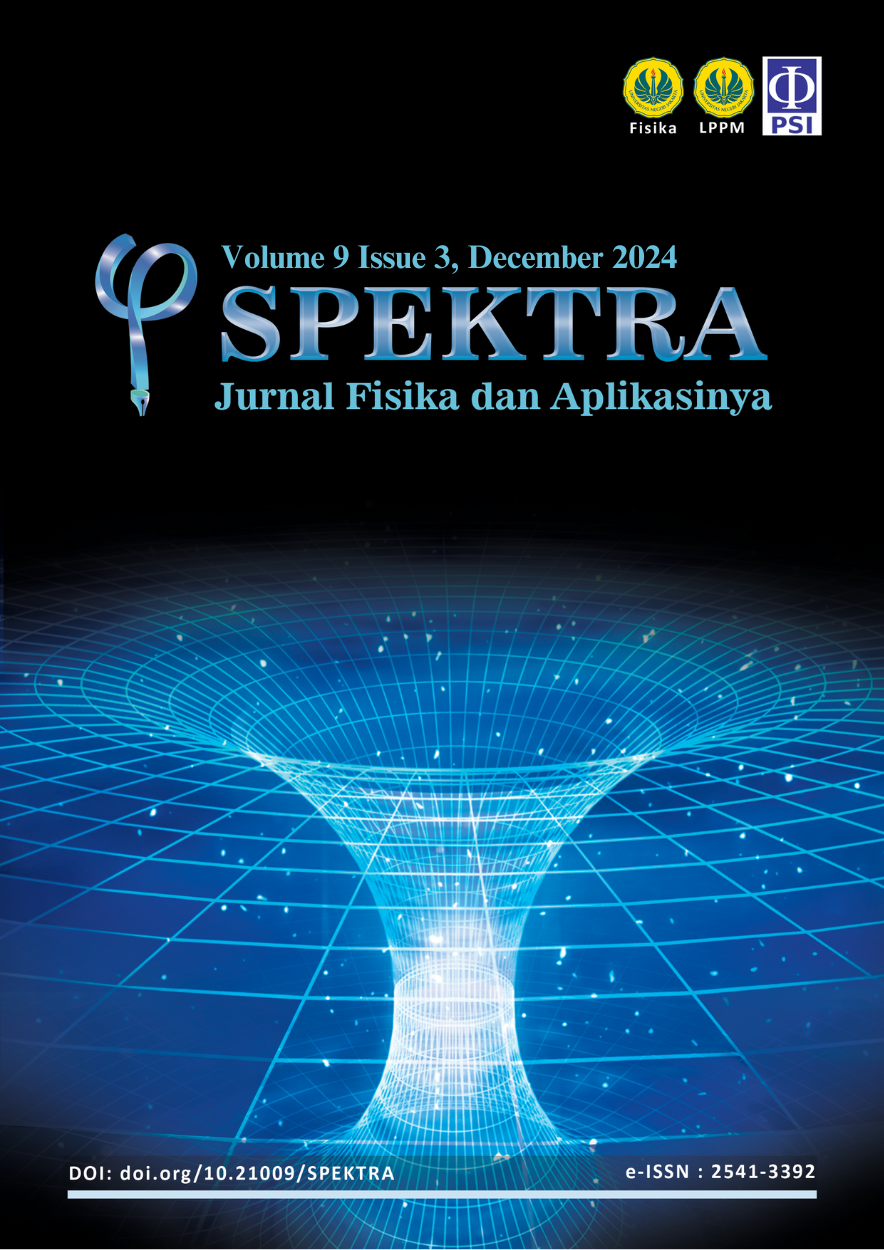About the Journal
SPEKTRA: Jurnal Fisika dan Aplikasinya is dedicated to researchers and practitioners in the field of physics and focuses on publishing high-quality research in specific areas of physics and its applications. The journal covers instrumentation and computational physics, material physics, medical and biophysics, astrophysics, theoretical physics, particle and nuclear physics, environmental physics, renewable energy, and other related fields. By emphasizing these areas, SPEKTRA aims to provide a specialized platform for advancing knowledge and fostering innovation in physics.
SPEKTRA: Jurnal Fisika dan Aplikasinya is jointly published by Universitas Negeri Jakarta and managed by LPPM Universitas Negeri Jakarta, Faculty of Mathematics and Natural Sciences Universitas Negeri Jakarta, Physics Department Universitas Negeri Jakarta, and the Physical Society of Indonesia (PSI), under collaboration agreements B/70/UN39.5.FMIPA/HK.07.00/2022 and 017/PSI.06/2022. This collaboration reflects a strong commitment to supporting physics research and its practical applications.
SPEKTRA has been accredited by ARJUNA (Indonesia's National Journal Accreditation System) and awarded a Sinta 3 rank.
Publisher Information
- Publisher: Universitas Negeri Jakarta
- Management: LPPM Universitas Negeri Jakarta
- Publisher Address: Kampus A, Universitas Negeri Jakarta, Jl. Rawamangun Muka, Jakarta Timur, Indonesia
- Website: https://lppm.unj.ac.id/jurnal/
- Contact Person: Devi Anggraeni (ojs@unj.ac.id)
- Dedicated Email Address: spektra@unj.ac.id
SPEKTRA operates from Indonesia, where the publisher is registered and carries out its activities.
Current Issue


SPEKTRA Volume 9 issue 3 contains six papers: 1) Laser-Assisted Scattering with Screened Diatomic Potential, 2) Phase Dynamics in 3D Superconductors: Analysis Using the Sine-Gordon, 3) Application of Variational Quantum Eigensolver for Ground State Energies Calculation in Hydrogen and Helium Atomic Sequences, 4) Geochemical and Magnetic Suseptibility Analysis for Critical Minerals Detection in Igneous Rocks and Beach Sand, 5) Seismometer Health Diagnosis Based on Cross Spectral Density Coherence Method in Indonesia Seismic Networks, and 6) The Effects of Stellar Wind, Rotation Velocity, and Overshoot Parameters on The Evolution of Massive Stars using MESA: Case Study of MPG 324, MPG 355, MPG 682.
The articles in this issue from 4 countries: Indonesia, Nepal, New Zealand, and Malaysia. We are grateful for all the contributions of the authors. We also appreciate the professional reviewers who are an essential part of this issue.

 E-ISSN 2541-3392
E-ISSN 2541-3392  Focus & Scope
Focus & Scope  Editorial Team
Editorial Team  Reviewer Team
Reviewer Team  Author Guidelines
Author Guidelines  Article Template
Article Template  Author Fee
Author Fee  Publication Ethics
Publication Ethics  Plagiarism Policy
Plagiarism Policy  Open Access Policy
Open Access Policy  Peer Review Process
Peer Review Process  Retraction & Correction
Retraction & Correction  Licensing & Copyright
Licensing & Copyright  Archiving & Repository
Archiving & Repository  Contact
Contact  Mendeley
Mendeley 

